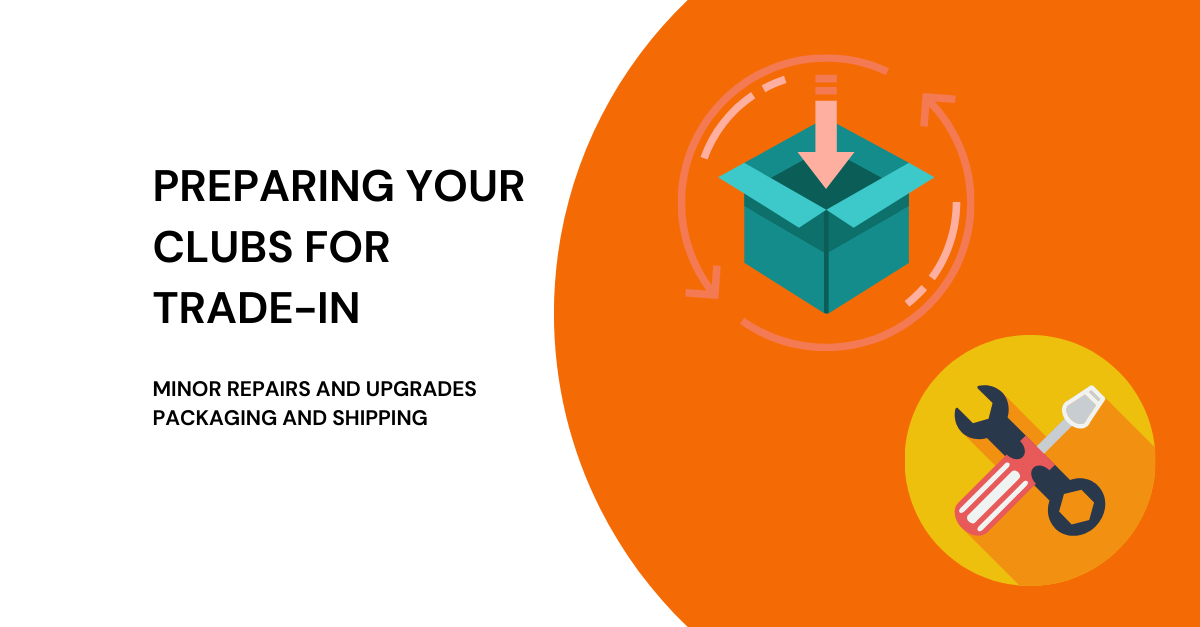

If you’re a golfer looking to upgrade your golf clubs without breaking the bank, trading in your current set for credit toward a new one is an excellent option. Not only does it allow you to get newer, more modern equipment on a budget – it also eliminates the hassle of trying to sell them. But how do you maximize your trade in values? In this blog post, we’ll go through all the steps you need to take to ensure that you get top dollar when trading in your old golf clubs and fund a future purchase!
One of the major benefits of trading in your current clubs is the fact that it can help you save money. Golf is an expensive sport, and the cost of new clubs, bags, and accessories can add up quickly. Rather than spending a lot of money on new clubs every few years, you can trade in your old clubs for new ones. This not only saves you money in the long run, but it also ensures that you are always using the latest equipment.
The process is fairly simple and easy to understand. First, you need to evaluate the condition of your clubs. You can do this by inspecting them closely and noting any signs of wear and tear, such as dents and scratches. Once you have an idea of their condition, you can take them to a local golf retailer or trade them in online. You will typically receive a trade-in value for your old clubs, which you can then use to reduce the cost of your next golf set.

When trading in your clubs, the condition is everything. A well-maintained club will always yield a higher golf club value than one that is dented, scratched, or rusty. Take some time to inspect each club and note any imperfections. Be sure to clean the clubhead, grip, and shaft beforehand to get the most accurate assessment. Additionally, make sure the set is complete and includes all original headcovers and club tools. Missing pieces can significantly lower the trade-in value. Different exotic shaft models can increase the price of your trades call us at 855-678-6737 for more info.
Club age also plays a role in determining its worth. It’s no secret that newer clubs have more advanced technology and features than older ones. As a general rule of thumb, clubs that are less than five years old are considered in good standing, while clubs that are more than ten years old are considered “vintage.” The latter is still valuable to collectors, but may not hold as much value for trade-ins. If you have an iron set that is missing some irons, some trade in companies will still get you paid for those individual irons but it'll be subject to price deductions.
Once you have evaluated your clubs, it’s time to head to the pro shop. Most shops have a trade-in process that involves appraising each club and offering a trade-in value. It’s important to note that the value offered is often lower than what the club is actually worth. This is because the shop needs to sell the club at a profit to make up for its overhead costs. That being said, you can negotiate the trade-in value and even shop around at other stores to compare prices. Some will offer a little more for store credit. When store credit is not what you are looking for, there are others that will pay you cash. Don't forget, iGolf Value Guide is home to the Highest Payout Guarantee.
The internet is your go-to source for finding out the trade-in value of your golf clubs. Several websites offer free online valuation tools, including iGolf Value Guide. Platforms such as this give you a competitive price for your clubs. Just enter the brand, model, and condition of your clubs, and the website's algorithm will return an estimated value.
If you’re not satisfied with the trade-in value offered by the pro shop, consider selling your clubs privately. Websites such as eBay or Craigslist are popular options for selling used clubs. However, be sure to accurately describe the condition of each club and include clear photos. You can also try selling your clubs to a second-hand sports equipment store or consignment shop. These options may yield a higher profit but also require more effort on your part.

Before sending your clubs in for trade-in, it's important to fix any common wear and tear issues. This includes replacing worn grips, repairing scratches on clubheads, and tightening loose shafts or ferrules. These simple fixes not only improve the club's condition but also its appearance, which can increase its trade-in value.
Once your used golf clubs are prepared for trade-in, it's important to package them safely for shipment. Use bubble wrap or foam padding to protect the clubheads and shafts from any potential damage during transit. Also, be sure to secure any loose accessories such as headcovers or tools within the box.
When shipping your used golf clubs, it's important to choose a reliable and reputable shipping service. Many golf retailers and manufacturers offer a prepaid shipping label for their trade-in programs, but if you decide to use a different service, make sure to use a shipping label option which you can track to ensure your clubs arrive safely. Once your items arrive the trade-in company will issue payment.
In conclusion, getting the most out of your golf club trade-ins is a great way to save some money on the newest clubs. To do so, ensure that you get your clubs appraised beforehand and know your trade-in options. Properly maintaining your clubs, being honest about their condition, and timing your trade-ins accordingly are also key factors in maximizing the value of your trade-ins. By following these final tips, you’ll be on your way to getting a fair price for your old clubs and owning new clubs without breaking the bank.

Can I trade in clubs that are not in perfect condition?
Yes, you can. If you have clubs that are well-used or have some cosmetic flaws, you can still trade them in for some value. However, you are likely to get more value for well-maintained clubs that are in excellent condition.
2.How do I spot a reputable trade-in platform?
Look for trade-in platforms that are reputable and have positive reviews from other golfers. You should also check the platform’s policy for determining trade-in values, payment options, and customer service. A good trade-in platform should be transparent in all these areas.
Still have questions? We have answers! Click here for more information.